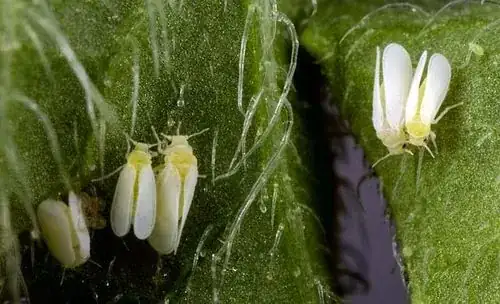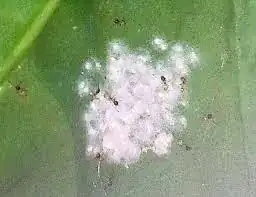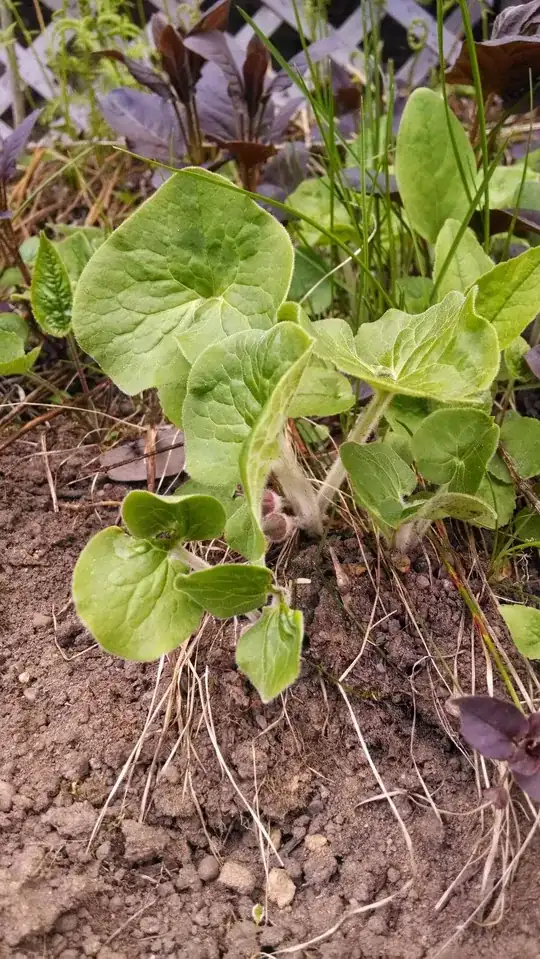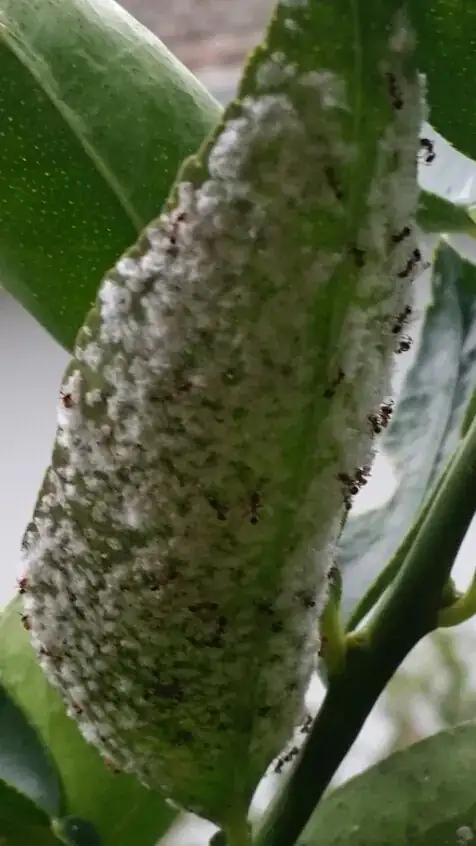I believe that (in the first picture) is citrus whitefly (Dialeurodes citri). The small white dots are probably the eggs and larvae (the nymphs fasten to the leaf undersides like scale - see below). These insect suck plant juices, and so are considered pests.
The nymph is a flat, elliptical, scale-like object, closely fastened to the underside of a leaf. It becomes fixed after the first molt. The nymphs, after the first instar, are flattened, oval, and are similar in appearance to the early instars of the unarmored scale insects. Like the scale insects, whiteflies lose their normal legs and antennae after the first molt (they are kept, but are abbreviated), but unlike the scale insects, the females gain them back in the adult stage.

Here are some management guidelines, from here:
Biological control. Several parasites and predators attack the citrus whitefly. An introduced wasp parasite (Encarsia lahorensis Howard) is established in Florida's citrus regions and is reducing citrus whitefly populations. Delphastus pusillus (Lec.), a small dark brown ladybird beetle, feeds on the eggs but is never abundant. Delphastus catalinae (Horn), a California species, was introduced into Florida by University of Florida entomologists, and it also feeds on whitefly eggs. Cryptognatha flavescens Motsch., a coccinellid about 1/10 inch long and reddish brown, and another ladybird beetle, Verania cardoni Weise, were found by Woglum to feed on the citrus whitefly in India. Morrill and Back (1911) recorded two other ladybird beetles, Cycloneda sanguinea L. and Scymnus punctatus Melsh., that feed on the citrus whitefly in Florida, as well as a mirid bug, lacewings, mites, ants, and a species of thrips, Megalurothrips fasciapennis Franklin.
From the second pic, it looks like you've got wooly aphids. Same as shown in this video. The ants are there for the honeydew, which the aphids excrete.

Here are some aphid management guidelines.



